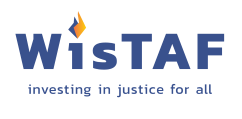FoodShare (SNAP) Eligibility
You might know about food stamps or SNAP (Supplemental Nutrition Assistance Program). In Wisconsin, we call it FoodShare. This program helps people get the food they need so they don’t go hungry.
Recipients receive a Wisconsin QUEST card, which is a safe and easy way to buy your food. Your QUEST card is a plastic debit card, and you use it to buy food at stores that have swipe card terminals and take part in FoodShare. You can use FoodShare at most grocery stores. You can also use it at many farmers markets to buy fresh fruits and vegetables.
Who Can Get FoodShare?
You might qualify if:
- You have a job that doesn’t pay much.
- You live on a small or fixed income.
- You are retired.
- You lost your job.
- You have a disability and can’t work.
How Do I Know if I Qualify?
Eligibility is based on income. Income will be considered for every member of the “Food Unit”. Food Unit generally refers to one or more persons who live in the same household and purchase and prepare food together for home consumption, including your dependents. You do not have to be related for someone to be considered part of your “Food Unit”.
To see if you can get FoodShare, we look at how much money your Food Unit makes each month. FoodShare considers income from all sources, including income earned from work, as well as "unearned" income, such as from Social Security, unemployment insurance, and child support. FoodShare looks at your gross income, which means the money you earn before taxes or other things are taken out.For most people, to potentially receive benefits, you need to be at or below 200% of the federal poverty level. If you are below this limit, this does not mean you will receive benefits. Next, FoodShare will consider your expenses, such as rent/mortgage, utilities, medical expenses, or dependent care costs, to determine if you receive a monthly benefit amount, and if so, how much. There are certain exceptions for food units who have income above 200%, and who contain an elderly, blind, or disabled member. Please contact your local FoodShare agency to discuss these exceptions. (Other article doesn’t discuss eligibility or financial tests?)
For most FoodShare applicants, there is no asset limit.
Use the following chart to:
- Count how many people live in your home.
- Add up how much money your family earns or receives each month.
- Check if your income is at or below 200% of the federal poverty level (FPL). If it is, you pass the initial test.
| Household Size | 200% FPL Gross Income Limit |
130% FPL Gross Income Limit |
Maximum Allotment |
| 1 | $2,510 | $1,632 | $292 |
| 2 | $3,408 | $2,215 | $536 |
| 3 | $4,304 | $2,798 | $768 |
| 4 | $5,200 | $3,380 | $975 |
| 5 | $6,098 | $3,963 | $1,158 |
| 6 | $6,994 | $4,546 | $1,390 |
| 7 | $7,890 | $5,129 | $1,536 |
| 8 | $8,788 | $5,712 | $1,756 |
| 9 | $9,686 | $6,295 | $1,976 |
| 10 | $10,584 | $6,878 | $2,196 |
| For each additional person, add: | $898 | $583 | $220 |
What if My Income Changes?
If your income goes up, like if you get a new job or a raise, you might not qualify anymore. If your family’s monthly income goes above 130% of the FPL, you need to tell your FoodShare agency right away. Failure to report changes could result in your benefits not being paid, being terminated from the program, or having to repay benefits.


